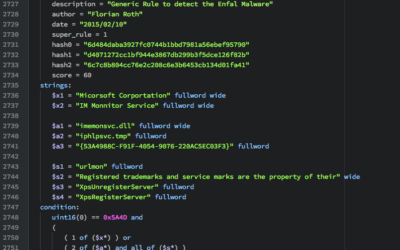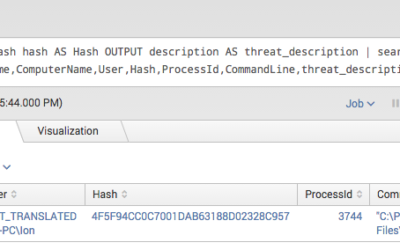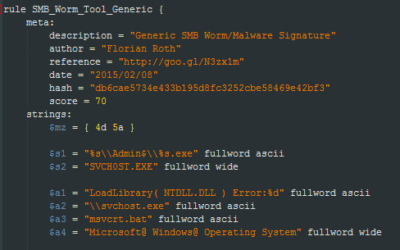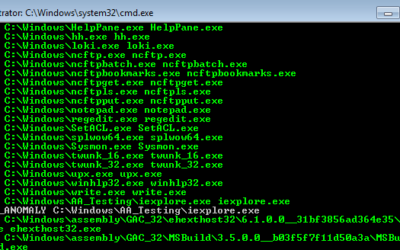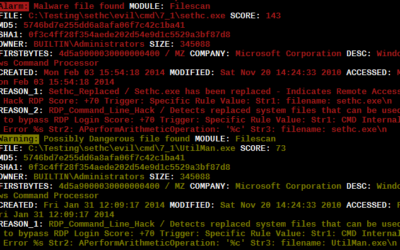Months ago I wrote a blog article on "How to write simple but sound Yara rules". Since then the mentioned techniques and tools have improved. I'd like to give you a brief update on certain Yara features that I frequently use and tools that I use to generate and test...
Splunk Threat Intel IOC Integration via Lookups
Today most security teams have access to a lot of different information sources. On the one hand they collect log data from different sources and try to correlate them in a useful way in so-called SIEM systems. On the other hand they receive threat information from...
Detect System File Manipulations with SysInternals Sysmon
SysInternals Sysmon is a powerful tool especially when it comes to anomaly detection. I recently developed a method to detect system file manipulations, which I would like to share with you. We know how to track processes with the standard Windows audit policy option...
APT Detection is About Metadata
People often ask me, why we changed the name of our scanner from "IOC" to "APT" scanner and if we did that only for marketing reasons. But don't worry, this blog post is just as little a sales pitch as it is an attempt to create a new product class. I'll show you why...
How to Write Simple but Sound Yara Rules
During the last 2 years I wrote approximately 2000 Yara rules based on samples found during our incident response investigations. A lot of security professionals noticed that Yara provides an easy and effective way to write custom rules based on strings or byte...
Sysmon Example Config XML
Sysmon is a powerful monitoring tool for Windows systems. Is is not possible to unleash all its power without using the configuration XML, which allows you to include or exclude certain event types or events generated by a certain process. Use the configuration to...
Critical Zero Day Vulnerability – Kerberos Service – CVE-2014-6324
(please find below the English version of the blog post) Wir informieren Sie hiermit über eine kritische Zero-Day-Lücke im Kerberos Dienst aller Microsoft Windows Server Versionen. Schwachstelle Die als CVE-2014-6324 bekannt gewordene Schwachstelle im Kerberos Dienst...
Smart DLL execution for Malware Analysis in Sandbox Systems
While analysing several suspicious DLL files I noticed that some of these files (which were obviously malicious) didn't perform their malicious activity unless a certain function was triggered. The malware used a registry entry to execute a certain function that is...
Bash Schwachstelle CVE-2014-6271 Shell Shock erkennen
Dieser Artikel enthält Information dazu, wie Sie die bash Schwachstelle CVE-2014-6271 Shell Shock erkennen und behandeln können. Betroffene Systeme Grundsätzlich sind alle Systeme betroffen, die eine “bash” einsetzen, also Linux Unix AIX Solaris HPUX D.h. auch viele...
Check Point Remote Access Client Auto Deployment
Setting up a client-to-site VPN using the Check Point (CP) Remote Access Client is a common scenario in CP infrastructures. As the central gateway is set up the Remote Access Client is started, connected to the gateway using valid user credentials, the gateway...
How to Scan for System File Manipulations with Yara (Part 2/2)
As a follow up on my first article about inverse matching yara rules I would like to add a tutorial on how to scan for system file manipulations using Yara and Powershell. The idea of inverse matching is that we do not scan for something malicious that we already know...
Inverse Yara Signature Matching (Part 1/2)
During our investigations we encountered situations in which attackers replaced valid system files with other system files to achieve persistence and establish a backdoor on the systems. The most frequently used method was the replacement of the "sethc.exe" with the...
